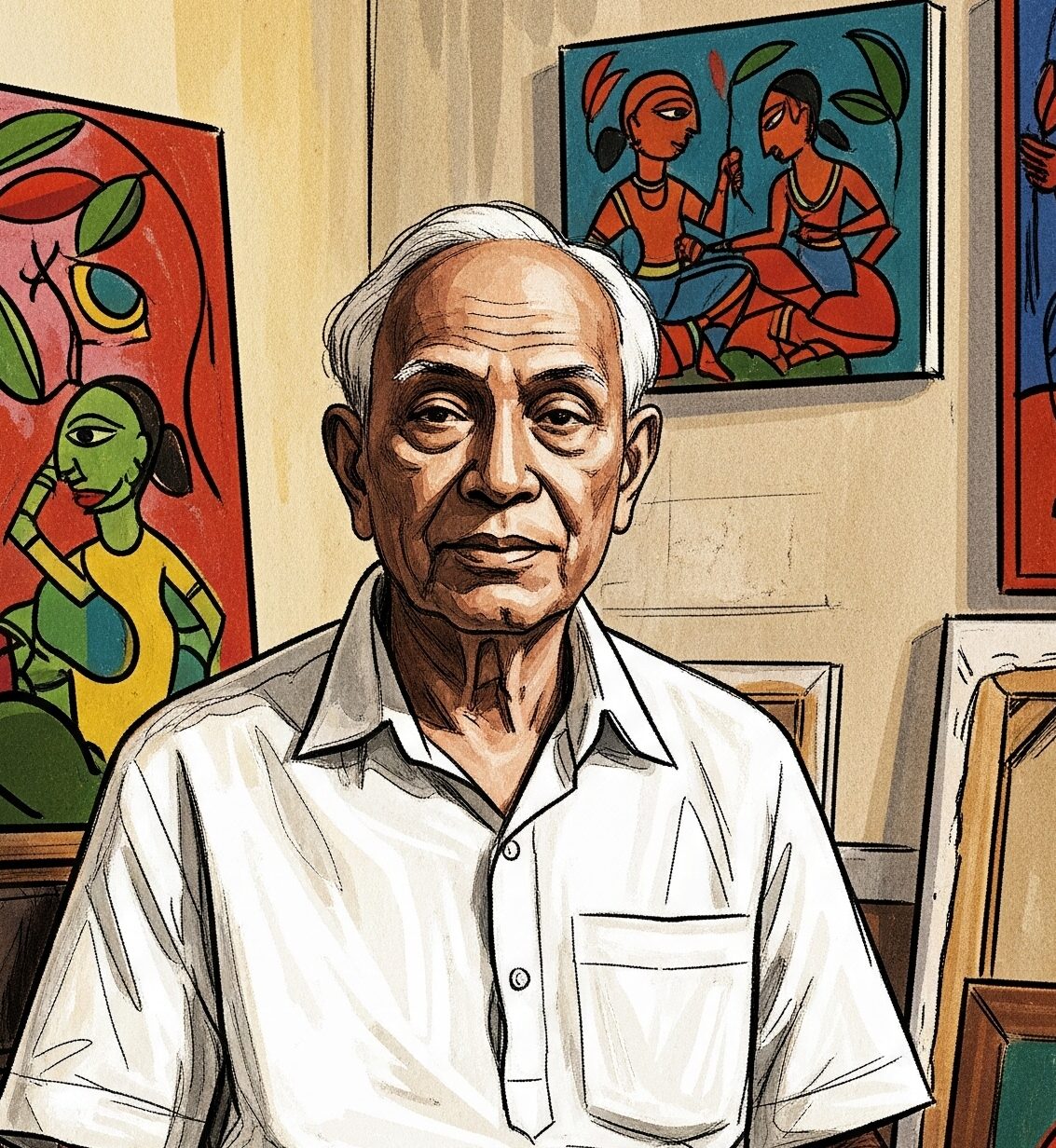Jamini Roy
Jamini Roy (1887-1972), a pioneer of Indian modern art, was born in Beliatore, West Bengal. Though initially trained in European academic-realist painting at the Government College of Arts and Crafts, Kolkata, he later forged a unique style by blending Bengali folk and tribal art.
Roy revolutionized art by using indigenous materials like woven mats, cloth, and lime-coated wood, creating textured, mosaic-like effects with precise lines, reminiscent of Byzantine art. Inspired by the Santhals, he fused their folk art and the Kalighat style, using minimal brushstrokes to develop a distinctive artistic language.
Rejecting prevailing modern art trends, Roy embraced Bengali folk paintings. His works, including depictions of mother and child, Radha, and Christ, featured simple two-dimensional forms, flat colors, and strong lines, often enhanced by decorative borders. His legacy is celebrated globally through exhibitions and collections. He received prestigious awards like the Viceroy's Gold Medal and the Padma Bhushan, and his masterpieces are reproduced on limited edition silk screens. Roy's influence on Indian art remains profound.

